Earth Photo 2022 shortlist: Powerful images reveal impact of climate change and fast fashion
The shortlist for the competition include images highlighting the climate crisis, impact of fast fashion and natural wonders
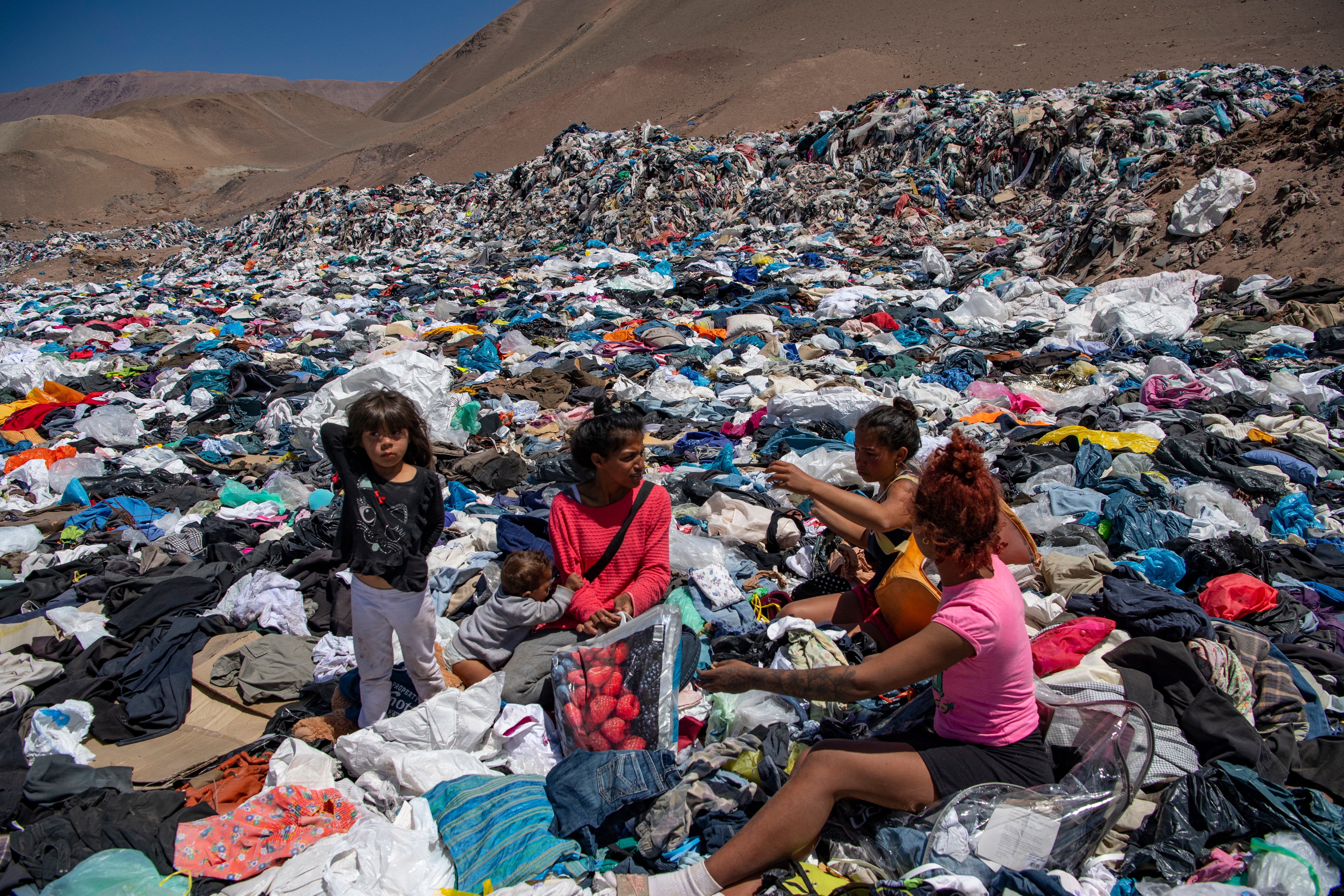
The 2022 shortlist for the Earth Photo international photography competition and exhibition have been announced.
The contest aims to celebrate photographs and videos that tell stories about the planet and human life.
Photographers and filmmakers from around the world are invited to submit their images or short films within the themes of People, Place, Nature, Changing Forests and A Climate of Change.
This year, 56 photos and videos from 35 artists were chosen by a judging panel made up of experts of photography, film, geography, and ecology and which is chaired by Pulitzer Prize-winning photographer, Marissa Roth.
“There is an unexpected joyfulness in this year’s shortlist, with a lot of smiling faces and even humour, in addition to seriousness and irony,” said Ms Roth.
“A reverence for nature, and nods to awe and wonder are evident in the majority of the images, even as some of them address climate change. It fels like the lights have beenturned back on towards hopefulness after the two challenging years during the pandemic.”
Wedding Night, Sandipani Chattopadhyay
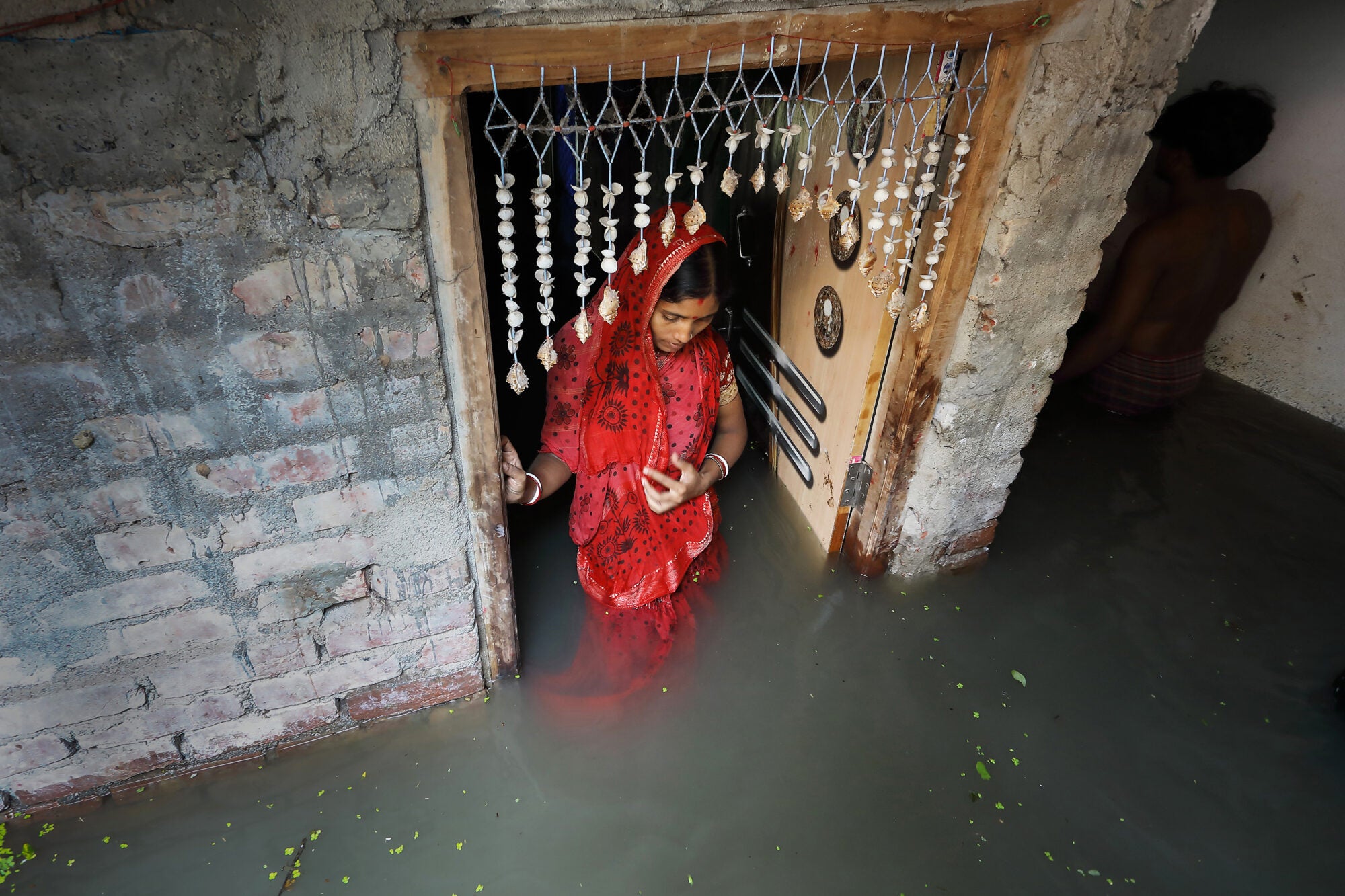
Taken in Midnapur in the west Bengal region of India, Mr Chattopadhyay captured young Malati’s wedding night. The tropical cyclone Yaas in 2020 caused the dam holding back the Keleghai River to break, resulting in the flooding of Malati’s village.
Mr Chattopadhyay is an IT professional and award-winning photographer featured in the National Geographic. On his entry, he said: “In the esteemed Earth photo contest, I focused on people’s lives due to the climate change, nature and people’s lives in the rural environment.
“We already destroyed our planet. But still we have some time for the restoration before it too late. I mostly focused on the different factors of climate change and the reaction of global warming.”
At the Pink Planet - 1 Car and 2 People, Yevhen Samuchenko
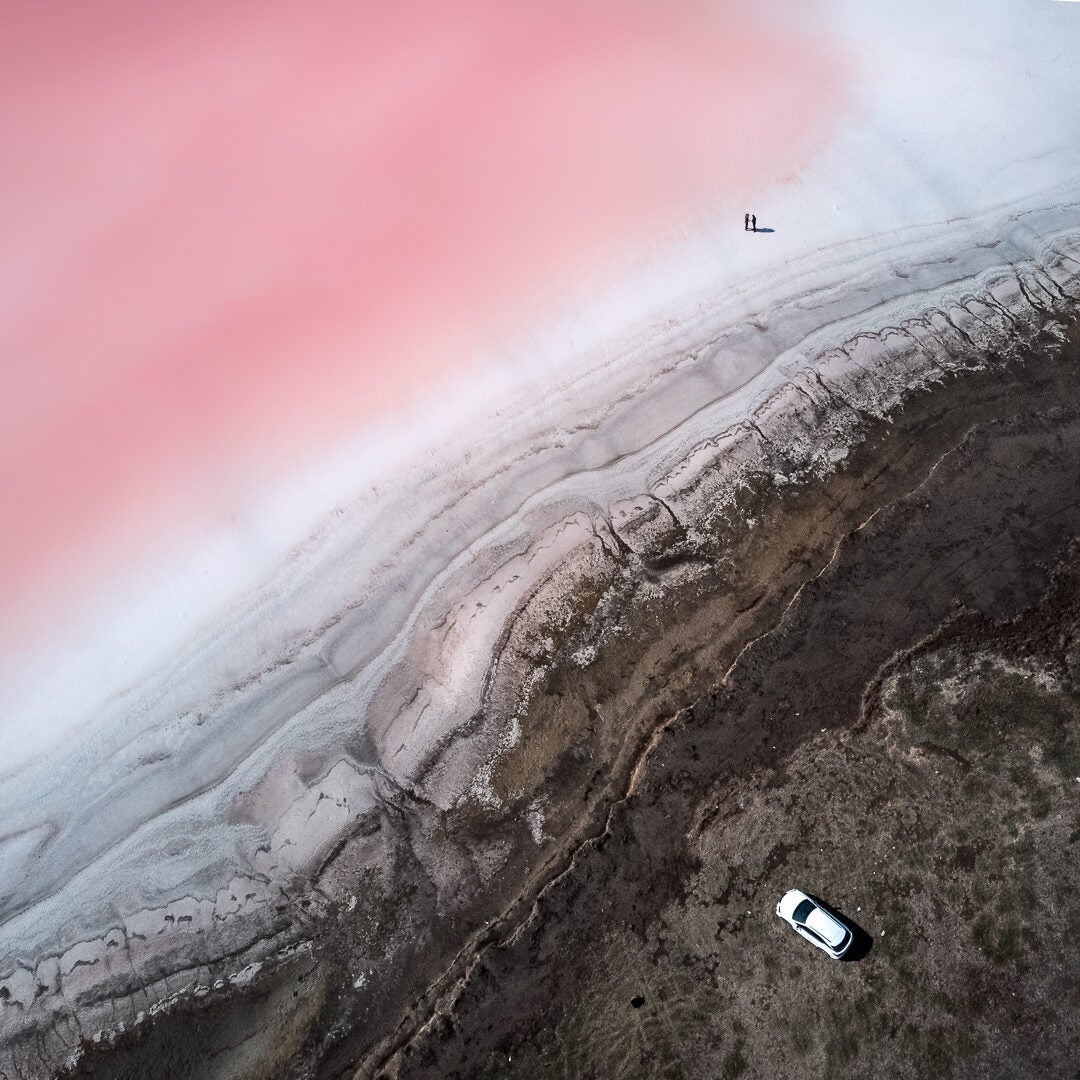
Captured in the pink salt lakes of southern Ukraine in 2019, Mr Samuchenko snapped two people and a single car alongside the natural wonder.
He said: “The first time you see the pink salt lakes of the Kherson region in Ukraine it feels as though you are looking at another planet. During the summer months, microscopic algae causes the water to turn pink and red. The view from above is literally out of this world.”
Mr Samuchenko is an award-winning photographer based in Ukraine, and his work depicts the shifting relationship between man and nature. Through his images, he hopes to highlight the “fragile beauty of our planet and the possibility of dialogue in the interaction of man with nature.”
Wind, Energy and Trees: Allied Against Climate Change, Robert Bueno
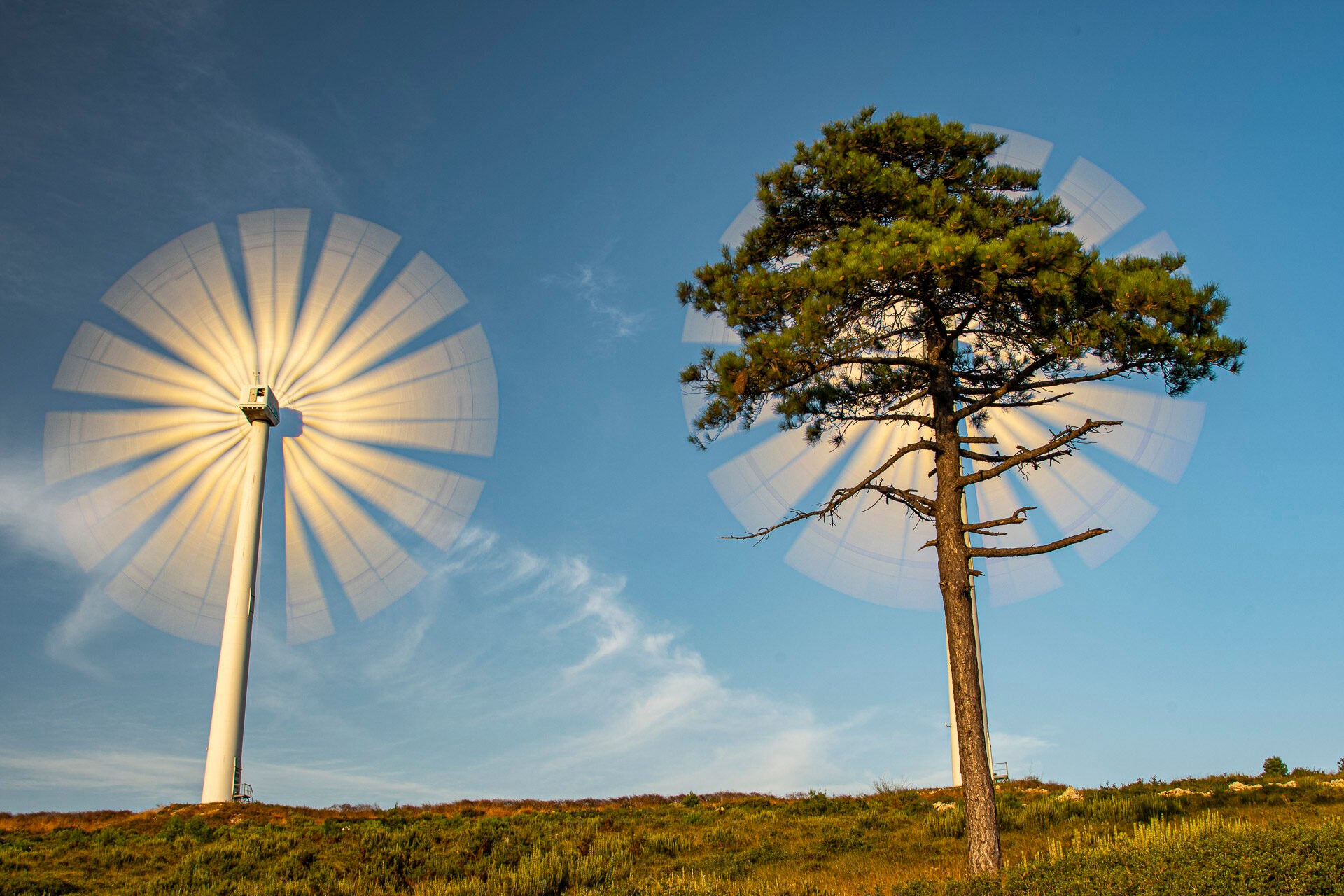
Mr Bueno’s entry was captured in Colldejou, Tarragona in his home country of Spain and aims to depict the need for renewable energy in the fight against climate change.
On his work, Mr Bueno said: “My photographs reflect not only the beauty of our planet but also my own memories and biography.
“Unfortunately, they reflect nature’s constant degradation in the hands of human beings as well. I wish my photographs, and also those of all my colleagues, could help us become aware of that degradation.”
Unearthed, Romain Loubeyre
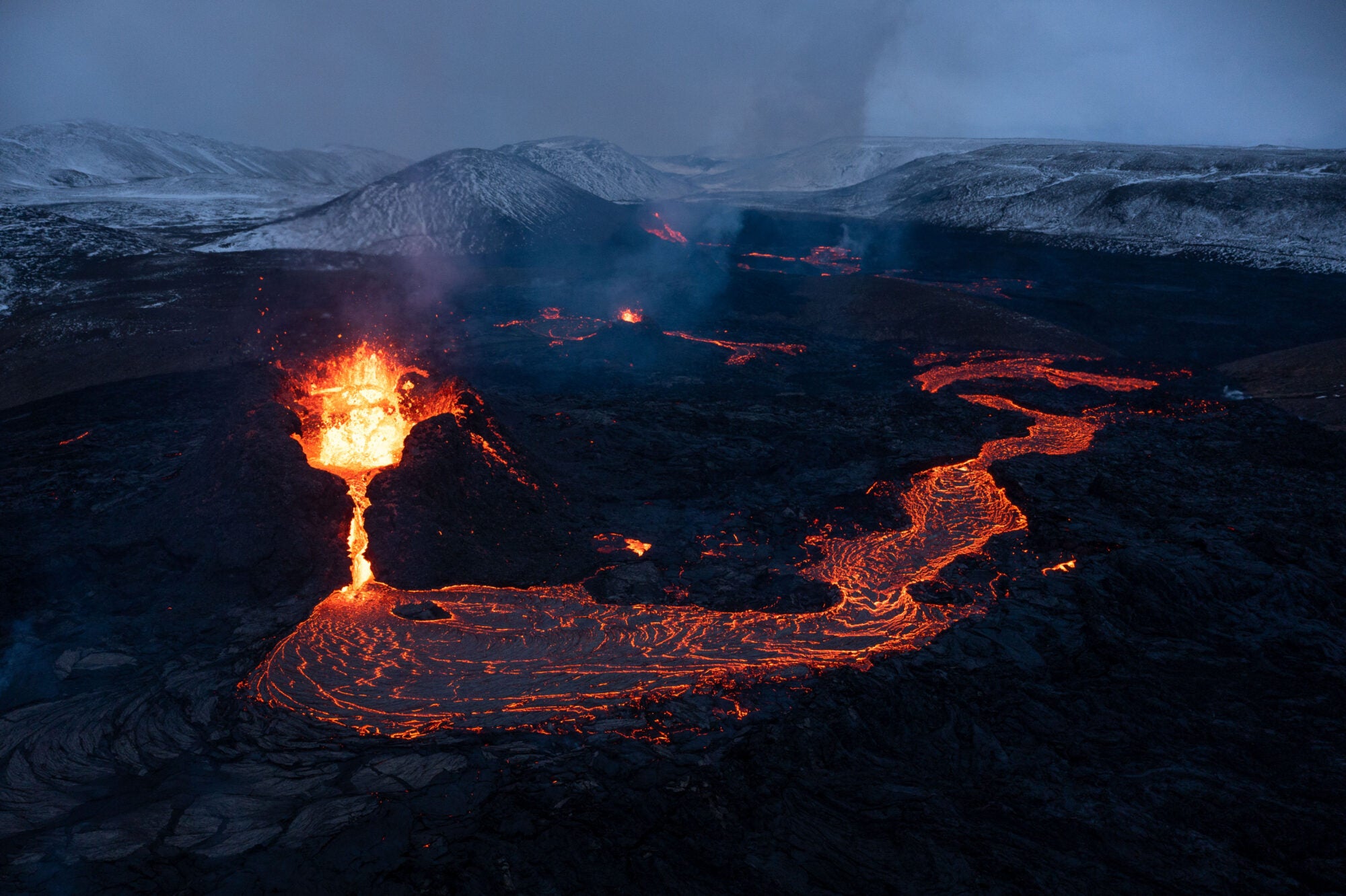
Mr Loubeyre’s entry depicts the eruption of the Fagradalsfjall volcano in Iceland in 2021, near the country’s capital of Reykjavík.
The esteemed photographer spent 12 days documenting the volcano in all weather conditions, and said the eruption was “one of those rare occurrences which capture, utterly, the attention of the viewer.”
Through his work, Mr Loubeyre aims to capture the “raw beauty of harsh environments” and thinks photos which aren’t easy to capture add a hidden element to the end result.
Wild Swimmers, Hannah Maule Ffinch
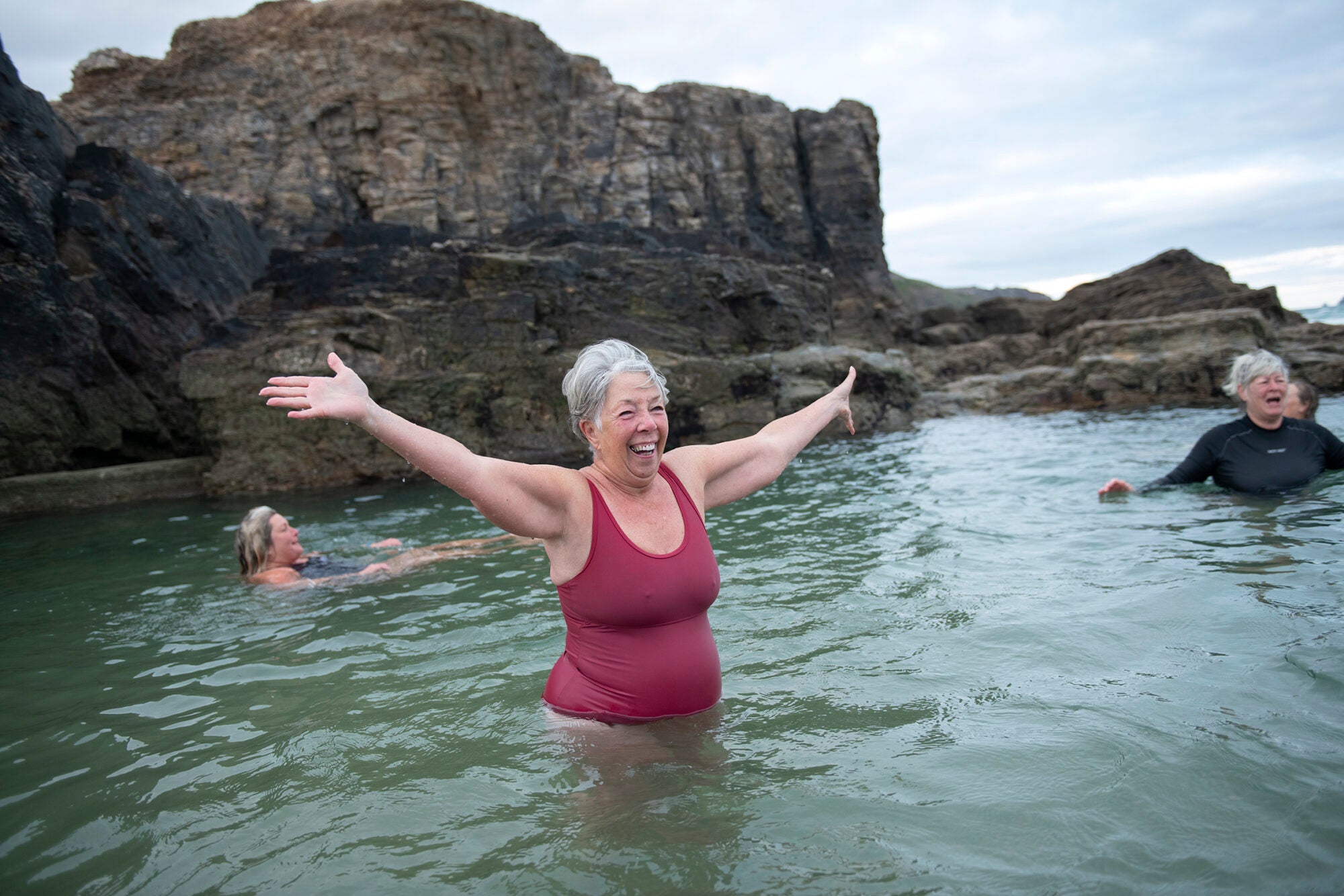
Snapped on Cornwall’s Perranporth Beach, we see 70-year-old Annie who gets up up at the crack of dawn to swim in the cold, morning water with her friends.
Ms Ffinch’s ‘Wild Swimmers’ series aims to explore “how humans are strongest when coming together in the face of adversity,” and after the loneliness and anxiety experienced by many during lockdown, she aims to highlight the “poignant link between people and nature which is crucial for survival.”
Ms Ffinch is an award-winning photographer, recognised at the British Photography Awards and Portrait of Humanity awards amongst many others.
Metatrichia Florformis, Barry Webb

Mr Webb’s entry depicts the Metatrichia floriformis, snapped in South Buckinghamshire, England.
He said it shows the “mature fruiting bodies of Metatrichia floriformis, splitting open to release their orange spores. Their red stems and petal shaped tops are identifying features.”
Mr Webb uses macro-lenses to hone in of the beginnings of nature’s growth, which the veteran photographer said has opened up another dimension to his photography depicting subjects across nature and human life.
Fast Fashion Contamination, Martin Bernetti

Taken in the Atacama Desert of Chile, South America, Mr Bernetti’s work highlights the real and dangerous impact and environmental cost of fast fashion.
The pictures show children sat on at least 39,000 tonnes of discarded clothes dumped in the desert, which is equal in weight to about 85,000 grand pianos.
Mr Bernetti is a photojournalist who has worked in multiple warzones throughout his 25-year-career and has been featured in multiple news platforms including The Independent.
Symbiosis, Marc Casanovas Felix
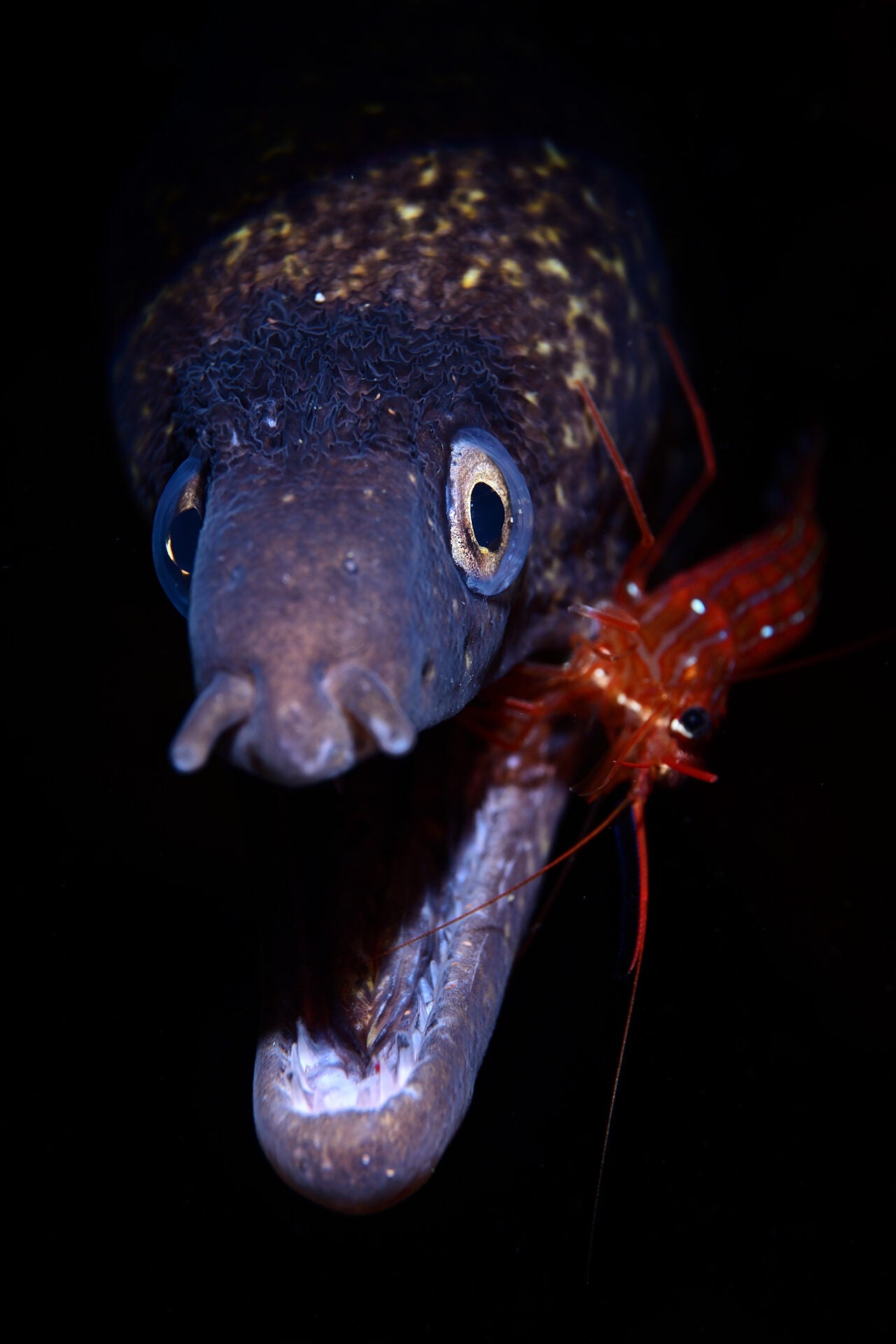
Taken in the seas of Tossa de Mar in Spain, Mr Felix’s entry depicts the symbiotic relationship between small prawn and a Mediterranean moray eel.
Mr Felix has been a nature photographer for around 25 years and often takes his images during his many diving trips.
Climate Crisis, Mohammad Rakibul Hasan
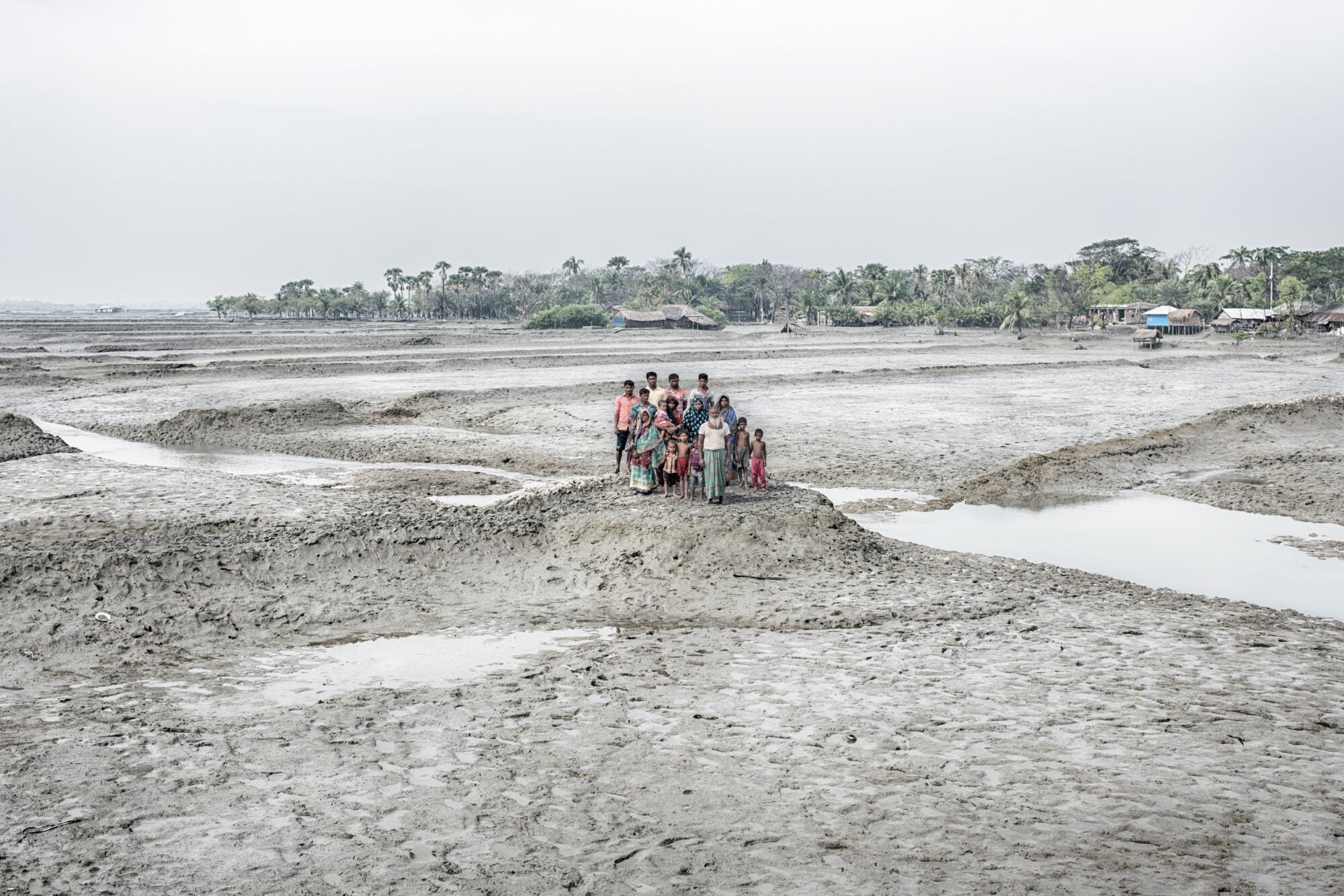
Mr Hasan’s entry was shot in the Satkhira district of south-west Bangladesh and depicts one of many families in the region devestated by climate change.
“Their land is gone in the river, and their survival depends on their work for a living. The scientists forecasted that the seawater will drown the whole coastal belt of Bangladesh around the Sundarbans by 2050,” said Mr Hasan.
The Bangladesh-based documentary photographer, filmmaker and visual artist explores human rights, social development and the environment in his work. Mr Hasan has also collaborated with multiple charities including Oxfam, the Red Cross and Water Aid.
Destruction, David Rippin
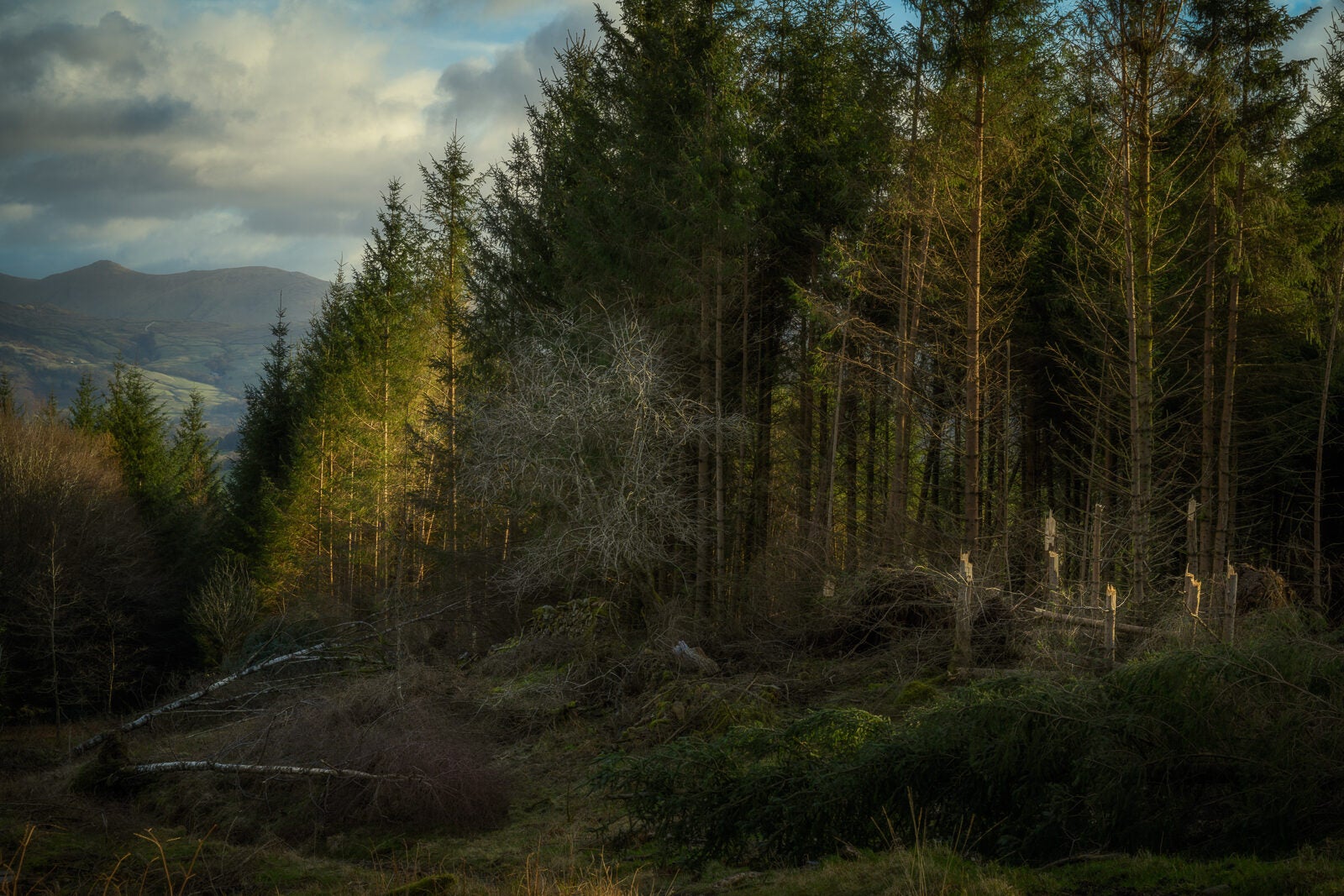
Taken in the Lake District, England, Mr Rippin’s entry shows a scene of broken trees, snapped off at the trunk after the devastation of Storm Arwen.
Mr Rippin is an award-winning landscape photographer and has previously been shortlisted as Travel Photographer of the Year, Outdoor Photographer of the Year and Wildlife Photographer of the Year.
Red Pepper Picking, Subrata Dey
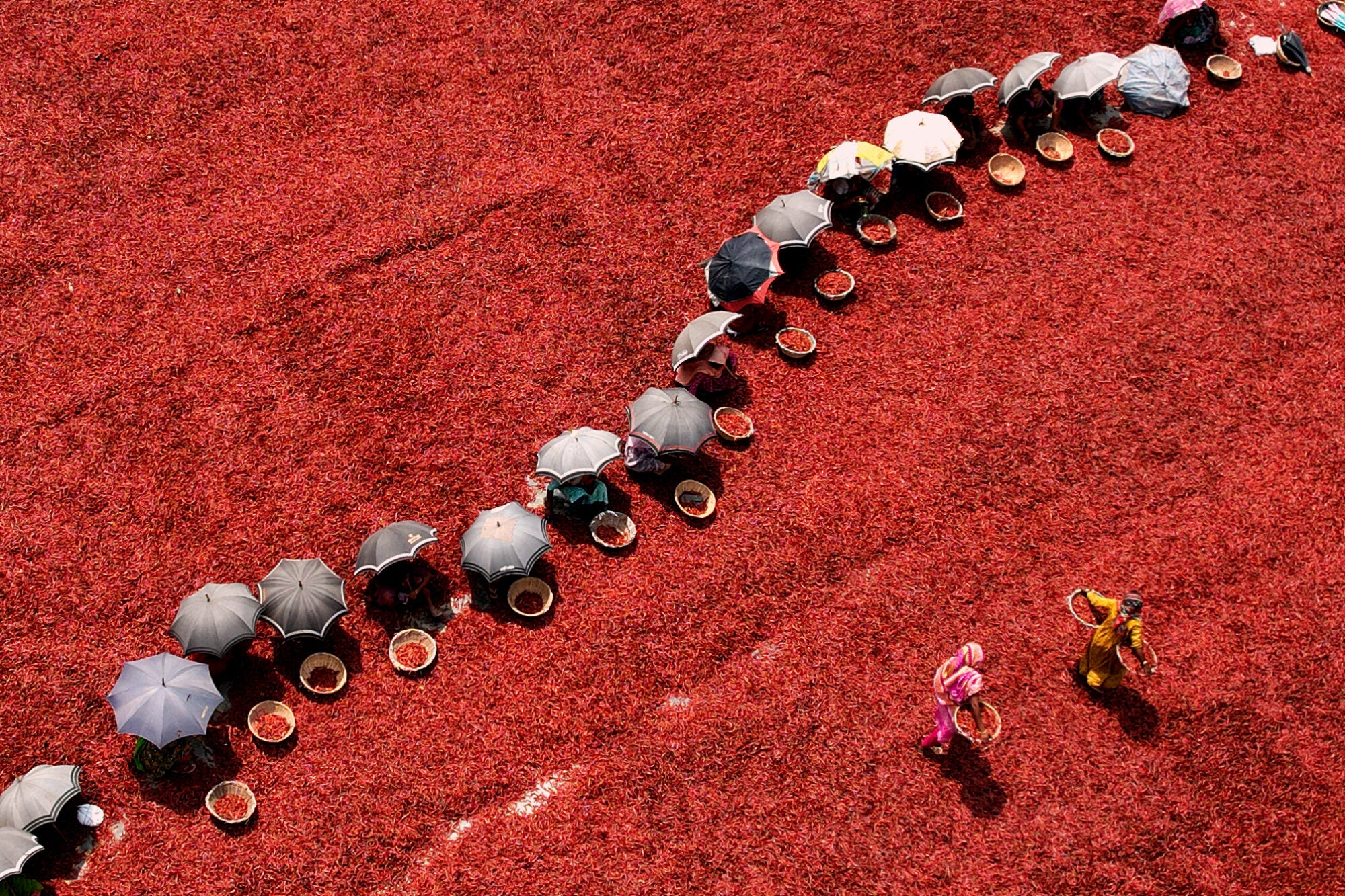
Snapped in Bogura, Bangaldesh, Dey’s entry shows the task of red pepper picking in the region done under the blazing sun.
On the photograph, Dey said: “Bogra red chillies are in high demand all over the country. Every year, spice companies collect pepper from the areas of Bogura and every day from 8 am to 4 pm, the workers here do the work of drying and sorting the pepper which is seen in the picture.”
Insect Diversity, Pal Hermansen

Swedish photographer Mr Hermansen’s entry depicts a variety of insects captured in Ski, Norway.
On his entry, he said: “These insects were found in a lamp that had had an unintended opening during the summer. I realised that this rich collection of insects had to be documented. These are creatures that are around without us realising their important existence.”
Mr Hermansen has had his work featured in the likes of the National Geographic Magazine and Conde Nast Traveler in the past and specialises in nature photography.
Only One Left in Stock, David Bart
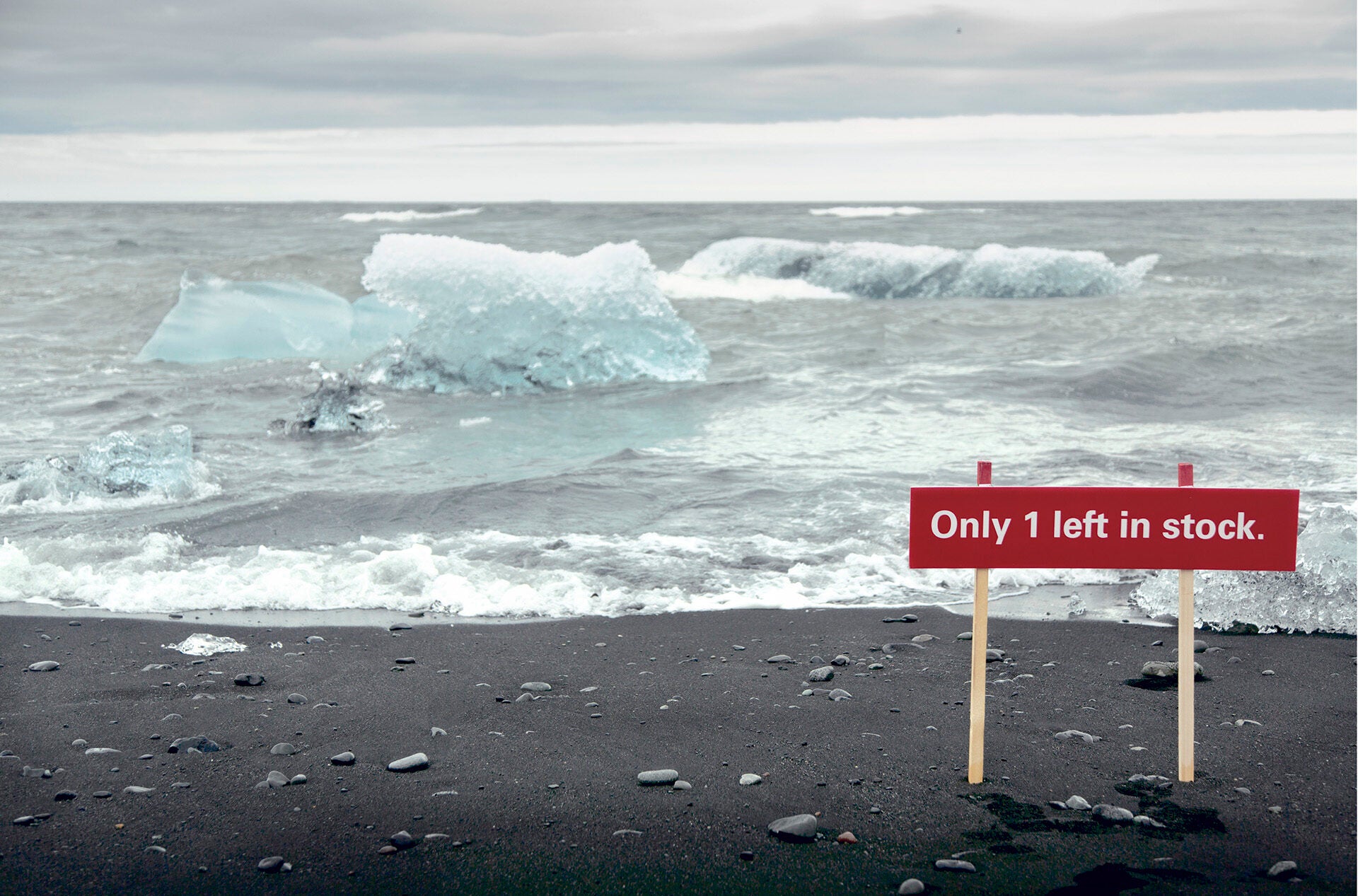
Mr Bart’s entry was taken in Iceland in 2015 and depicts the real-life impact of global warming and climate change.
In his work, Mr Bart explores the relationship between nature and man and looks at the impact of human activity on the environment, describing man as a “master and possessor of nature.”
In Their Natural Habitat, Chris Eggleton
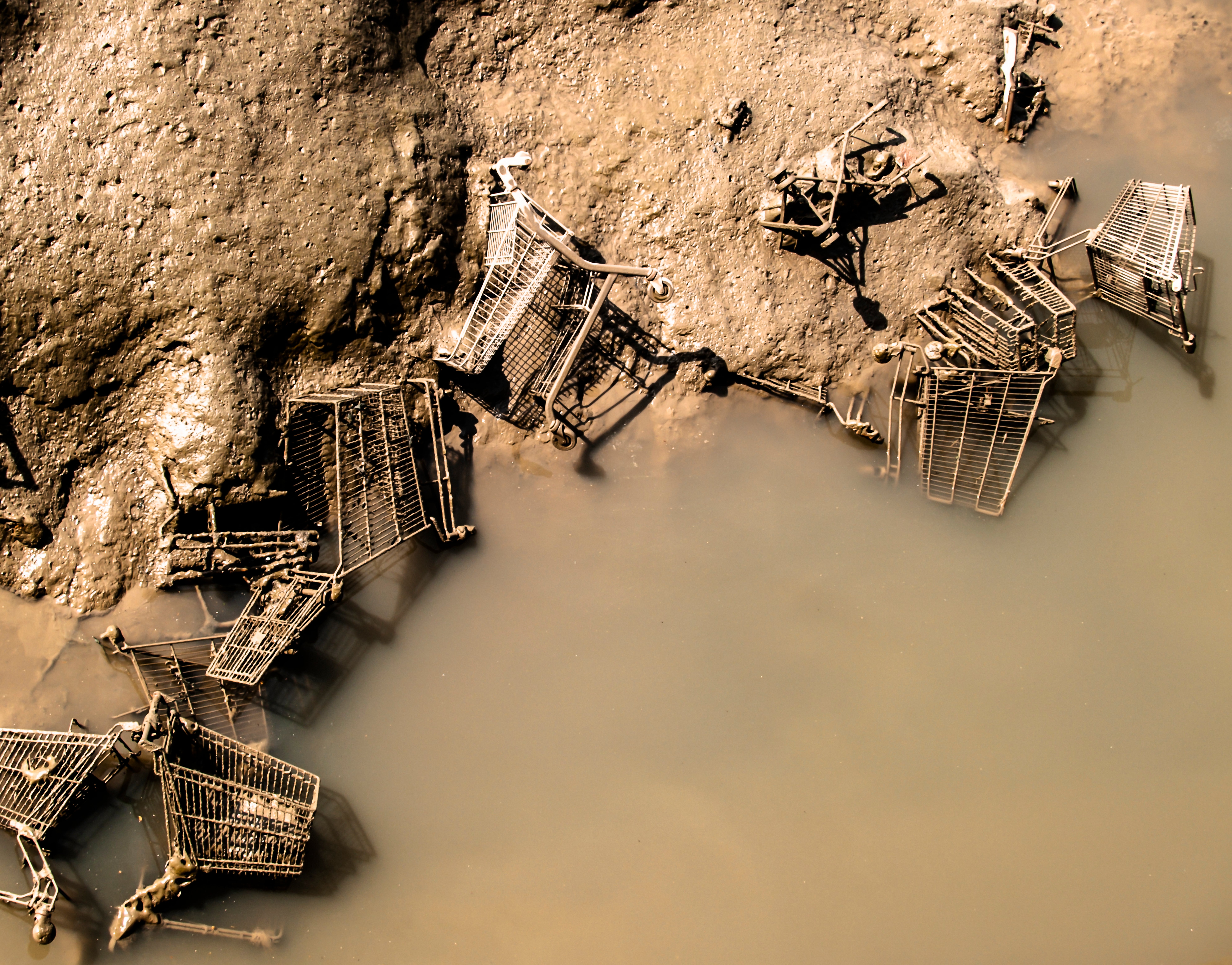
Taken in Kent, England, Mr Eggleton’s entry is a portrait of the accumulated disposal of unwanted objects within a river revealed at low tide.
The UK-based photographer said he “seeks to portray the accumulated disfigurements inflicted upon the natural environment as a consequence of the casual neglect for which we are all, as members of society, to a greater or lesser extent responsible.”
Mr Eggleton’s portrait based photographer has been recognised and exhibited in the UK and France.
The Earth Photo 2022 exhibition is open at the Royal Geographical Society in London until 26 August and a selection of shortlisted photos will be shown on a national tour to Forestry England sites from 11 July.
The winners of Earth Photo 2022 will be announced during a private ceremony on 14 July at the Royal Geographical Society in London.
Join our commenting forum
Join thought-provoking conversations, follow other Independent readers and see their replies
Comments
Bookmark popover
Removed from bookmarks